The Newport of my youth was a working waterfront. fishing boats, commercial boats and yachts co-existing side by side in the same water and the same docks.
Today, the is not a shred of evidence of this life.
The Newport of my youth was a working waterfront. fishing boats, commercial boats and yachts co-existing side by side in the same water and the same docks.
Today, the is not a shred of evidence of this life.
SUNDAY, AT THE 12 METER YACHT CLUB IN NEWPORT, RHODE ISLAND ORGANIZED BY DAN NERNEY WE WERE PRIVILEGED TO LISTEN TO JOOP SLOOF PRESENT HIS STORY OF THE KEEL ON “AUSTRALIA II” WHICH CHANGED THE HISTORY OF THE AMERICA’S CUP.
JOOP SLOOF WAS AN AERODYNAMIC ENGINEER WHO HAD BEEN HIRED BY PIET VAN OOSSANEN WHO RAN THE DUTCH TOWING TANK IN WHICH THE TESTING WAS CONDUCTED FOR BEN LEXAN THE NAVAL ARCHITECT WHO DESIGNED AUSTRALIA II.
JOOP PRESENTED A COMPELLING CASE THAT IN FACT HE WAS RESPONSIBLE FOR THE KEEL DESIGN USED ON “AUSTRALIA II”.
THE AUDIENCE COMPRISED OF THOSE WHO LIVED THE EVENTS AND THOSE WHO WERE NOT EVEN BORN WHEN IT ALL TOOK PLACE. HALSEY HERRESHOFF, WHO HAD NAVIGATED “LIBERTY” AND ALSO A PHD IN AERODYNAMIC ENGINEERING WOULD HAVE HAD A SPECIAL PERSPECTIVE SUGGESTED WHEN ASKED. HALSEY SUGGESTED THAT THE KEEL SHAPE, IE. THE WINGS WOULD NOT HAVE MET THE CHAIN GIRTH MEASUREMENT REQUIREMENT OF THE TWELVE METER RULE. AS FAR AS I KNOW THIS WAS A SUBJECT THAT WAS NEVER PURSUED.
BARBARA LLOYD, WHO COVERED THE AMERICA’S CUP HAD INTERVIEWED JOOP SLOOF AT THE TIME AND WROTE A THROUGH STORY; AGAIN NEVER PURSUED.
THE CONCLUSION OF THE STORY IS THE THE RIGHT THING HAPPENED TO HTE AMERICA’S CUP FOR THE WRONG REASONS.
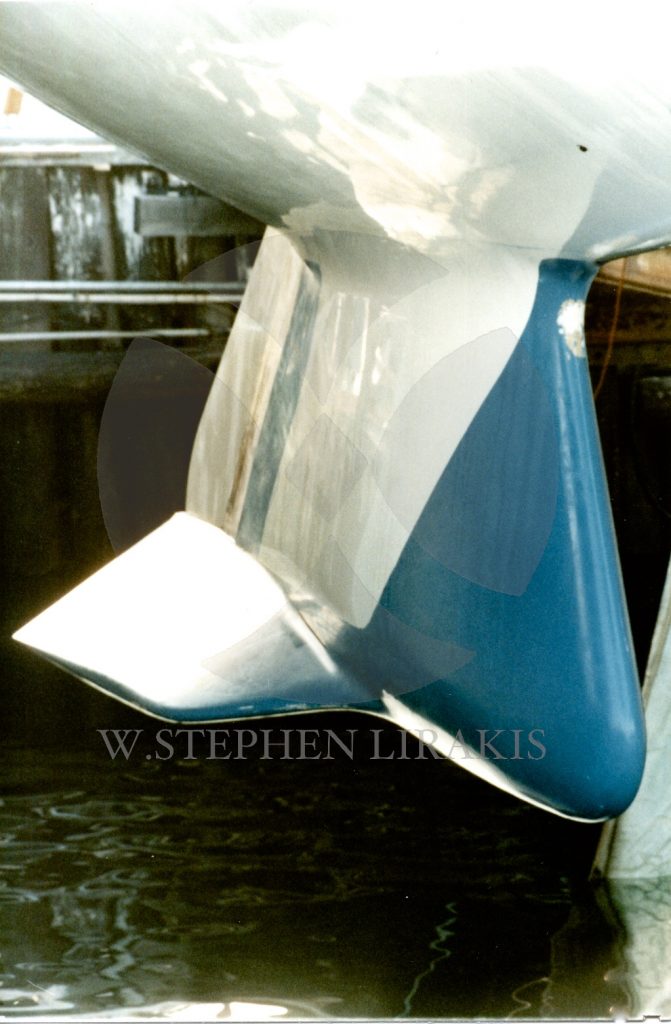
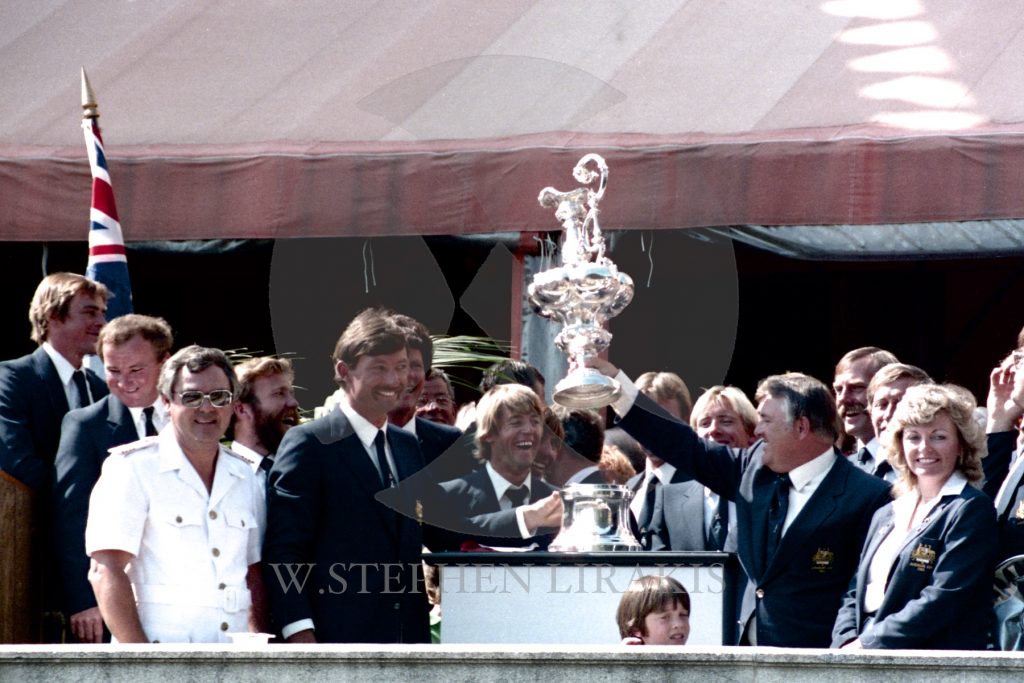
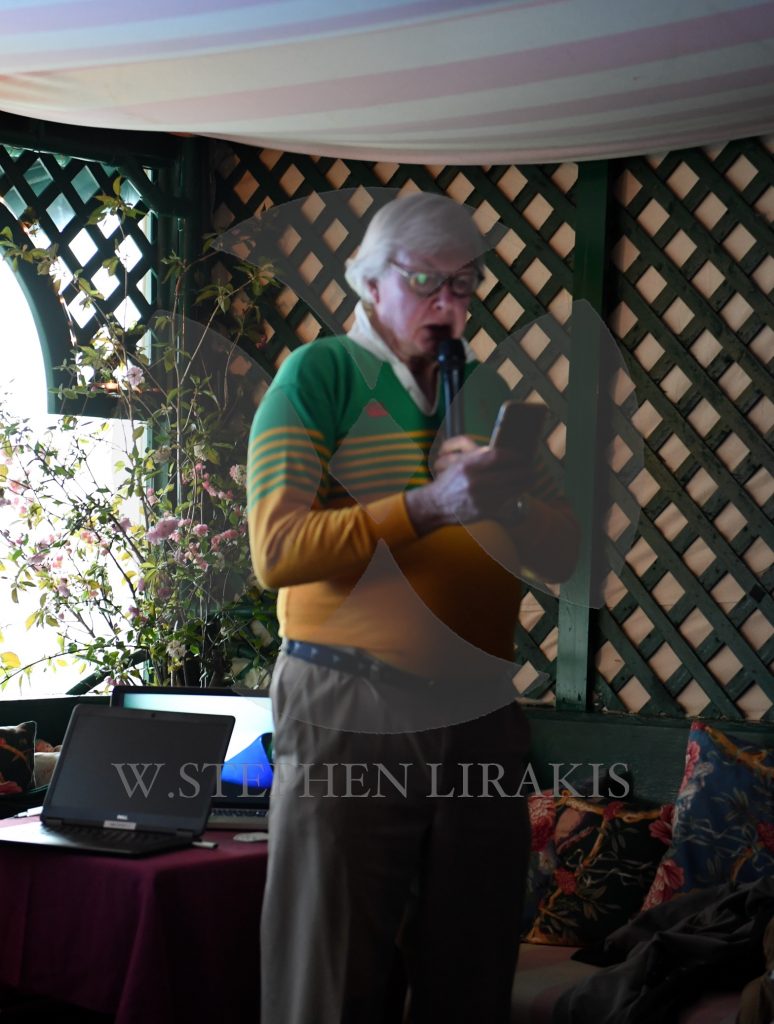
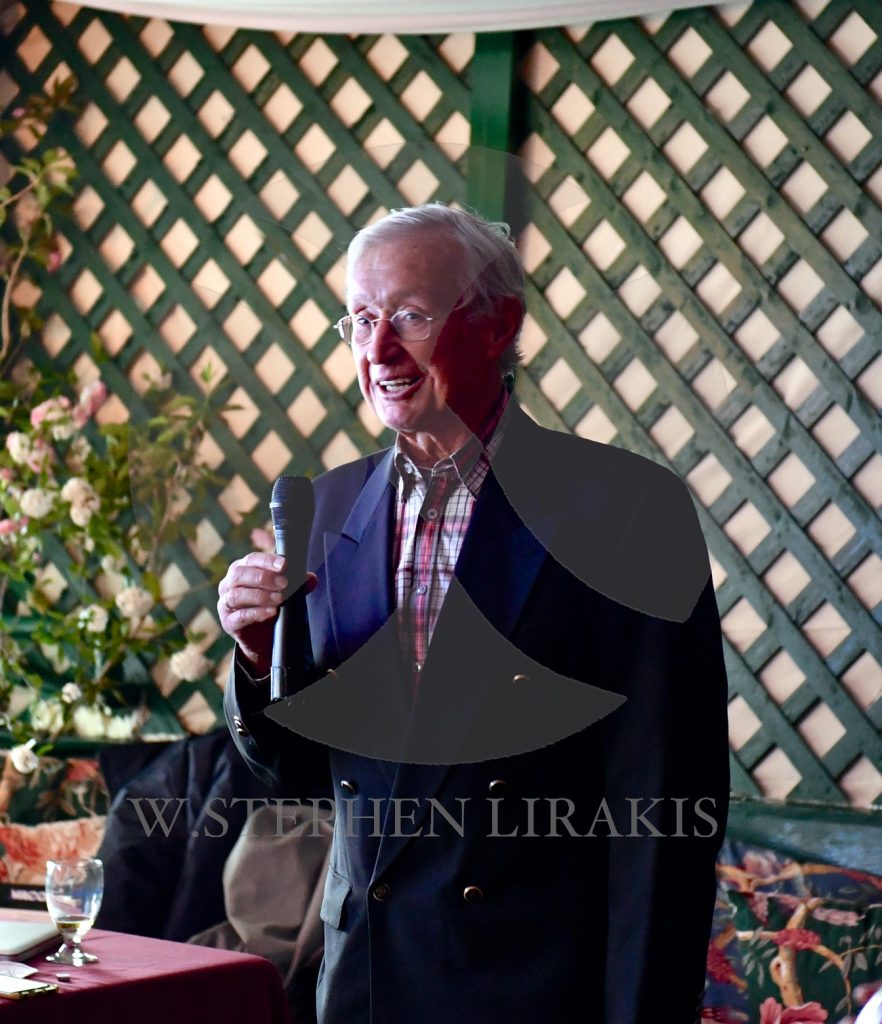
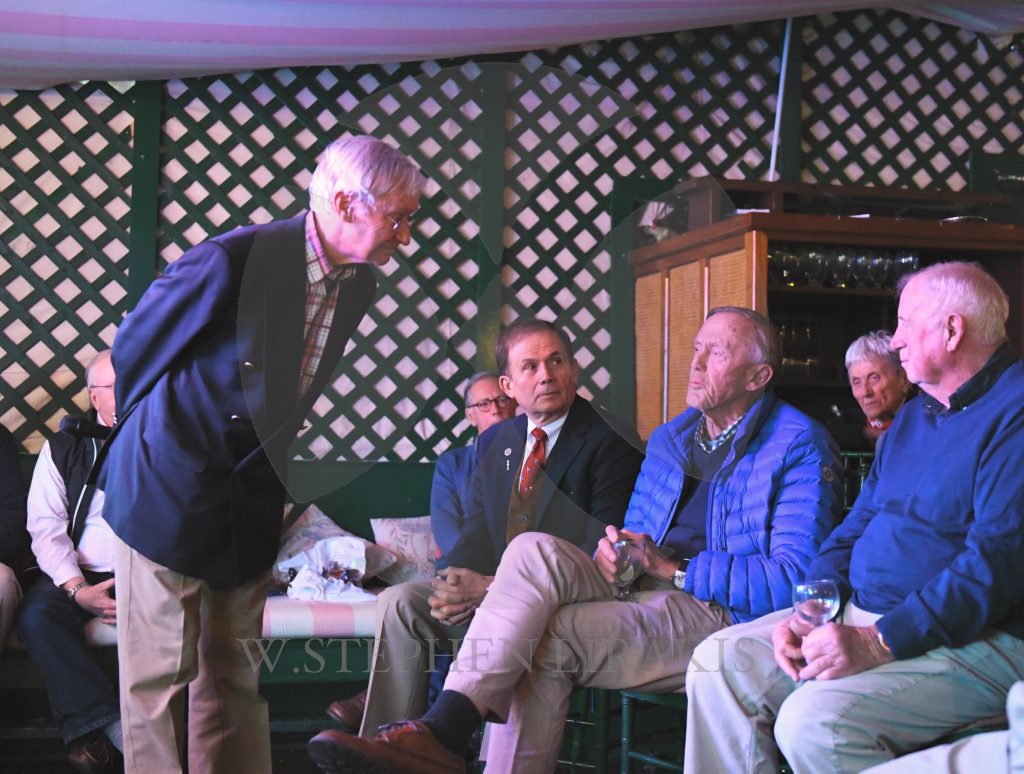
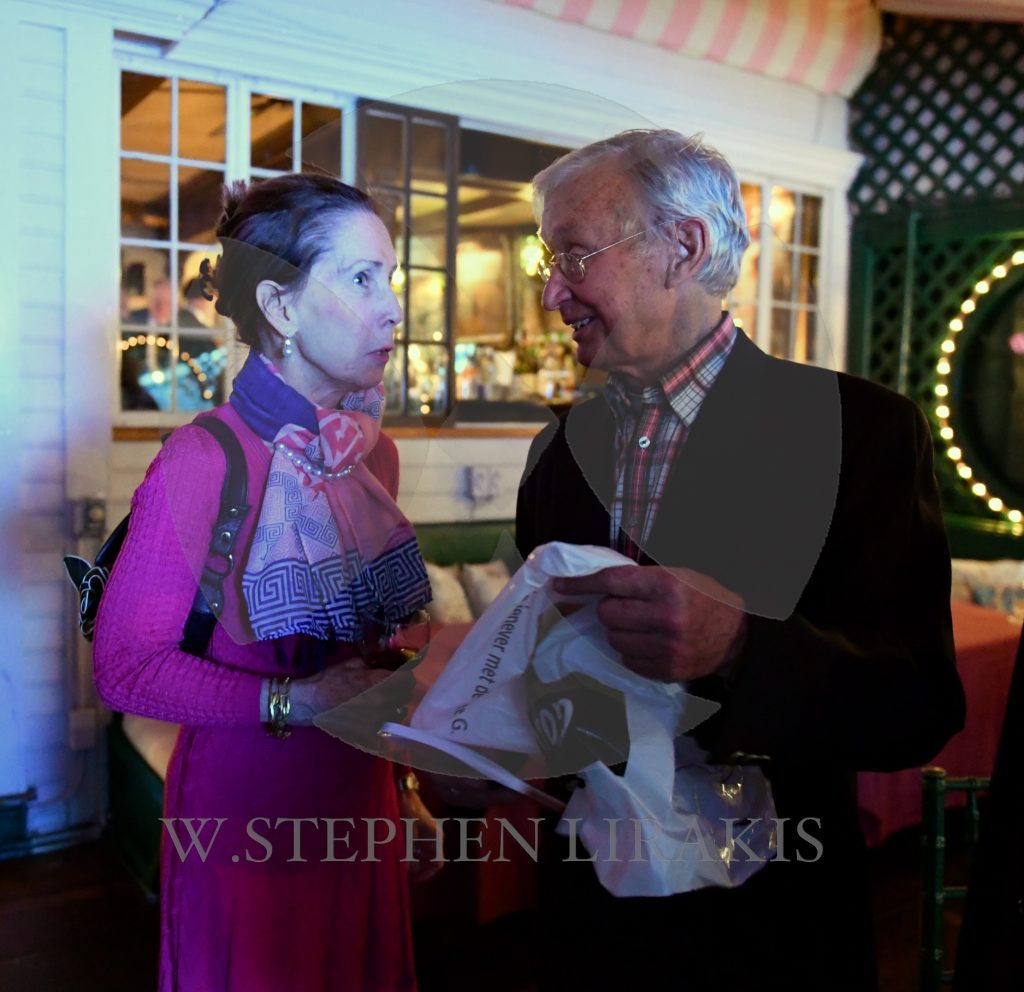

Australia II, which won the 1983 America’s Cup with its secret weapon – the winged-keel. Picture: Tom R Ragland

Australia II at Newport, Rhode Island, after winning the 1983 America’s Cup.
The longest winning streak in organised sporting history was broken on September 26, 1983, when Alan Bond’s Australia II broke the New York Yacht Club’s 132-year hold on the America’s Cup.
The revolutionary winged-keel was the key and all credit was given to Ben Lexcen, an immensely congenial, self-taught Sydney yacht designer.
That was what Australia believes. It was also what Bond had to convince the New York Yacht Club to believe because in 1983 it was against the America’s Cup rules to employ a designer who was not a national of the challenging club’s country.
But it was not true.
Suspicions were rife from the beginning that Lexcen was not the originator of the groundbreaking keel design. In 2009 Dutchman Piet van Oossanen claimed responsibility for the original design of the keel’s winglets and admitted accepting $25,000 in what he believed was hush money from Bond to keep the secret.
Now his claim has to be qualified. The man who kept the secret of the keel’s origin longest and who has best claim to be its designer has now come completely out of the shadow.
He is another Dutchman, Johannes “Joop” Slooff, a retired fluid dynamicist with a degree in aeronautical engineering, who has laid out his case in his book Australia II and the America’s Cup: The Untold, Inside Story of the Keel.
The evidence he presents to support his role as the keel designer seems irrefutable.
In 1981, Oossanen was the representative of The Netherlands Ship Model Basin, also known as MARIN (MAritime Research Institute of the Netherlands), contracted by Bond to conduct tank testing for the Cup challenge, and Slooff had been recruited by Oossanen from the Dutch National Aerospace Laboratory.
Slooff, whom I met with his wife, Lia, in Newport while covering the historic 1983 America’s Cup for The Australian, spoke with me from his home in Uithoorn after the release of his book this week.
“Ben Lexcen wanted to test variations on a conventional keel when he came to Holland in May 1981 at the NSMB’s Wageningen test tank,” he told me.
“He may not have been aware I had been asked to join Piet for the keel design when he arrived.
“He wanted to benchmark test the Australia model with a couple of other conventional types of keel with thicker sections that can accommodate more ballast.
“I had by then been thinking about the winged keel for two or three weeks but as my real work was with aircraft I told him of my thoughts.”
For those two or three weeks, Slooff had been talking with van Oossanen about the keel shapes to be investigated through fluid dynamic computations at his department at NLR.
When Lexcen arrived, he put forward the proposal for the upside-down keel and the winglets, and included from his computations the relative dimensions, twist, taper, cant angle, section shapes and such.
“I had been arguing for years that an upside-down keel should suffer less from loss of side force through free water surface effects than ordinary tapered keels. My department at NLR had done research on winglets for aircraft around 1979-1980 and I realised that they would also be very effective in reducing the resistance due to side force of a sailing yacht when sailing upwind,” he said.
Slooff stresses that he and his co-worker Harm Sytsma had been studying the aerodynamic characteristics and performance improvement aspects of winglets for aircraft wings for the Fokker aircraft company.
“I argued that they should also work on sailing yacht keels and, probably, even better, because of the smaller span and the associated larger drag-due-to-lift of a keel as compared to an aircraft wing. In other words, they could improve the performance of a sailing yacht through a reduction of the underwater resistance when sailing upwind.
“Besides, winglets could accommodate additional low-positioned ballast that would improve the yacht’s stability and upwind performance further.”
Well aware of Lexcen’s status as one of Australia’s greatest sporting heroes with a legendary status akin to that of Phar Lap and approaching that of Donald Bradman, Slooff stresses that “nothing of what I have said or written changes the fact that Ben Lexcen had full design responsibility and was free to adopt or reject whatever was proposed to him.
“Ben and the Australian syndicate management had the courage to adopt something radical that had not (yet) proven its superiority. For this reason, the success of Australia II, in my opinion, is and remains an Australian success.”
Those who have followed this saga across the past three decades will doubtless hark back to the stories of Lexcen fixing endplates — like little wings — to the rudder of his 18-footer Taipan nearly 20 years before Australia II, but his biographer Bruce Stannard wrote: “Ben told me he had tried the winged keel idea before but was unsure whether it would work.”
Lexcen said to Stannard: “I had tried fins or wings on 5.5s and dinghies and they never worked or if they did I couldn’t tell the difference.”
Slooff says: “If he played with winglets in the 1960s, then why didn’t he put them on Southern Cross in 1974 and on Australia (I) in 1977 or 1980? And what about inverse taper (of the keel)?
“With three of the main players — Lexcen, (Warren) Jones and Bond — no longer among us, I will probably never know the answers to these questions.
“What is certain, however, is that Ben Lexcen never told me about his 1960s winglets.”
There is no one left from that triumvirate at the innermost core of the victorious 1983 campaign to speak for Lexcen who died in 1988 from a heart attack, aged 52.
Jones, executive director of Bond’s challenge and the tough no-nonsense end of the victorious 1983 campaign, died aged 65 after a massive stroke in 2002, and Bond died during heart surgery last June, aged 77.
John Longley, the project manager, who also sailed aboard Australia II, said it was difficult to say who had been responsible for what part of the enterprise when so many people had been involved.
“You have to remember that Benny was alone, surrounded by Dutch technocrats, there were plenty of ideas flying around and I know he was twitchy about the whole deal later because he told me.”
I was aware Slooff had played an important role in the keel development when I met him, but when I asked Lexcen about Slooff’s role when we were together in Newport after the series had ended he was uncharacteristically evasive.
“He’s a very friendly guy,” isn’t he, Lexcen said, and gave me one of his crew “boxing kangaroo” ties, which I still keep as a treasured memento of that Cup.
Australia II skipper John Bertrand, now president of Swimming Australia and busily preparing his charges for the Olympic trials, visited the test tank in The Netherlands with Bond and Jones on a lay day during the 1981 Admiral’s Cup series where he was racing Bond’s Apollo V with many of the sailors who would crew Australia II.
He says only someone of Lexcen’s eclectic mindset could have brought the whole boat together successfully.
“That was his genius,” Bertrand told me. “He had a dynamism, an extraordinary ability to accept what was different and see the merits. A great lateral thinker.”
Bertrand recalls Bond and Jones were at war with the New York Yacht Club which was constantly trying to nail them on the rules.
“They even wanted us to stop using Microsoft Windows because the software wasn’t created in Australia,” he said, citing a challenge that was quickly dismissed.
Bertrand also pointed out that the rule that barred competitors from using designers from countries other than their own has now gone — but that even in 1983 was constantly being bent with yet another Dutchman, Johan Valentijn, adopting Australian citizenship to work on Bond’s 1977 challenger Australia, taking up French citizenship to design for the French in 1980 before pledging allegiance to the US and signing up with Dennis Conner for 1983.
Yachting veteran James Hardy says he spoke with Lexcen at Lexcen’s home in Clontarf, Sydney, and the designer told him he had seen “some blokes testing end plates for aeroplanes in the test tank and had asked them ‘couldn’t you do something with those on a boat?’ ”
But how can we ever know, says Hardy, musing on the elements that combined to bring about historic victory, how can we ever know exactly which piece of coal makes the whistle blow?
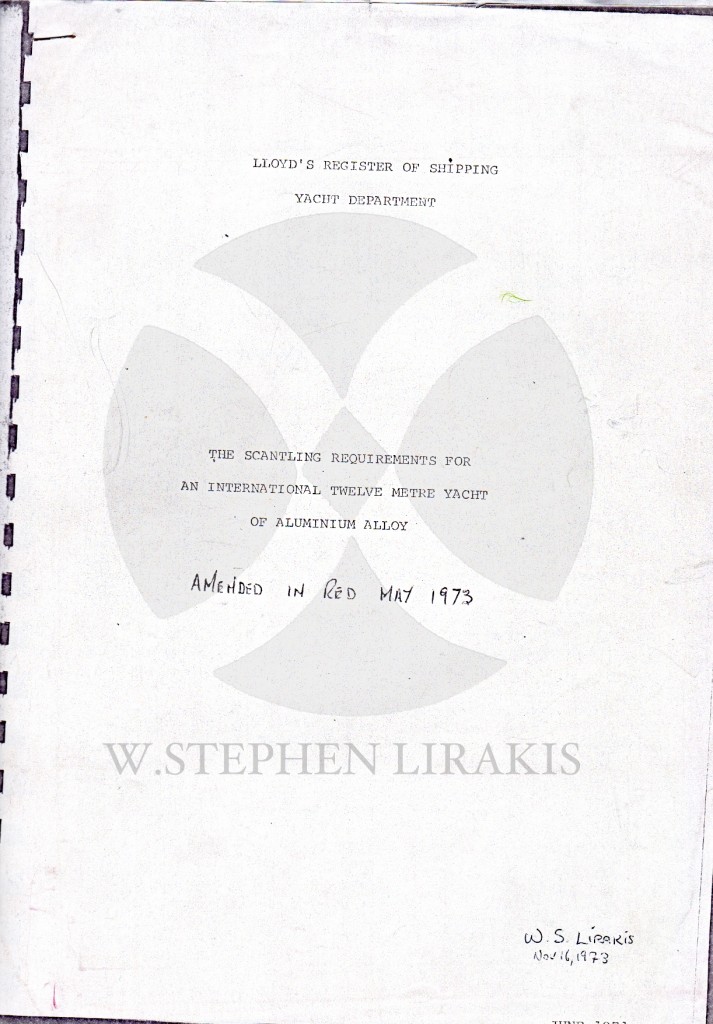
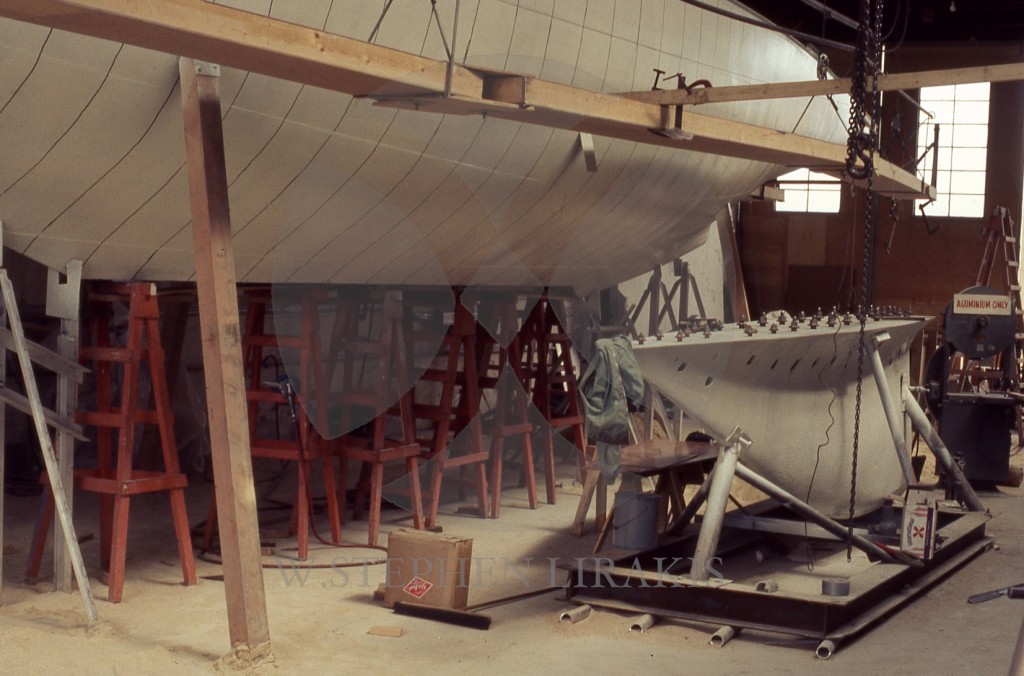
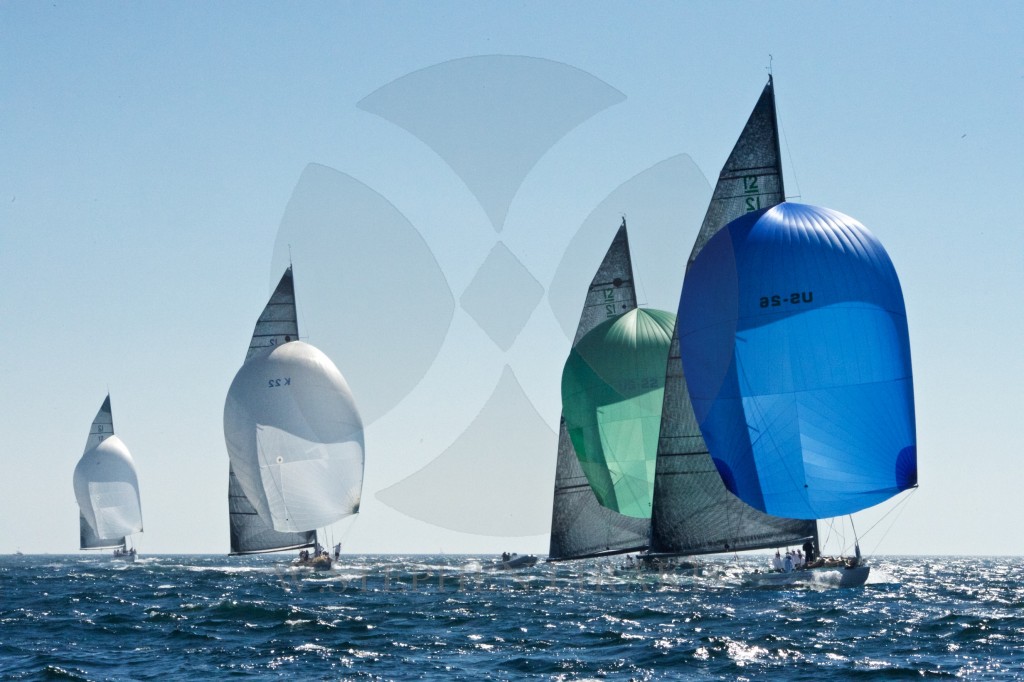
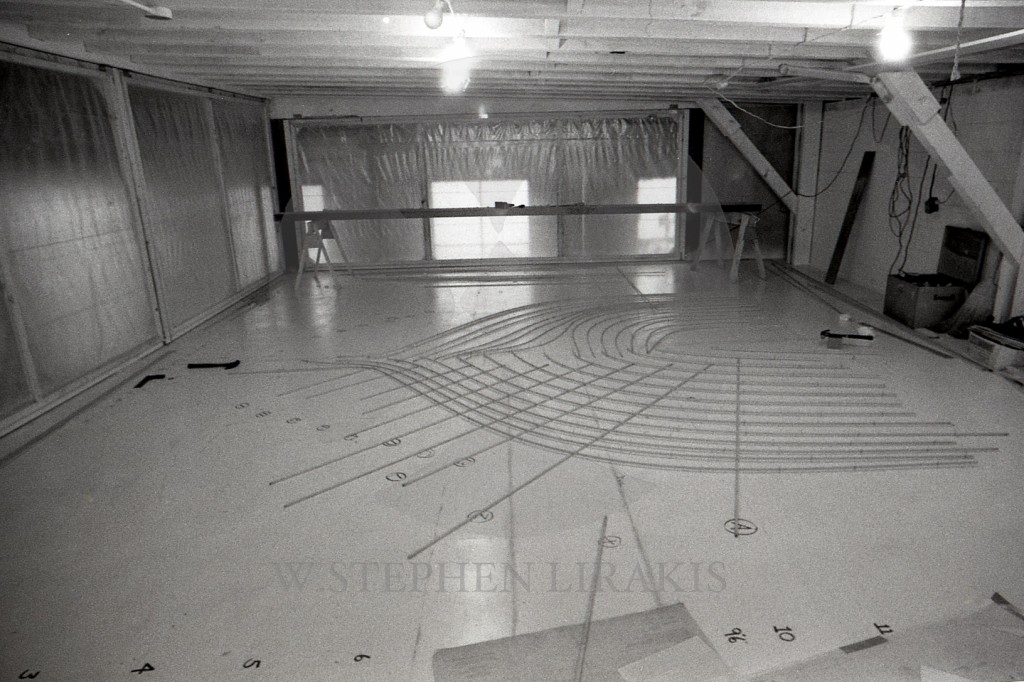
a recent response to the “official” letter. As I read it; missing the point.; however self serving.
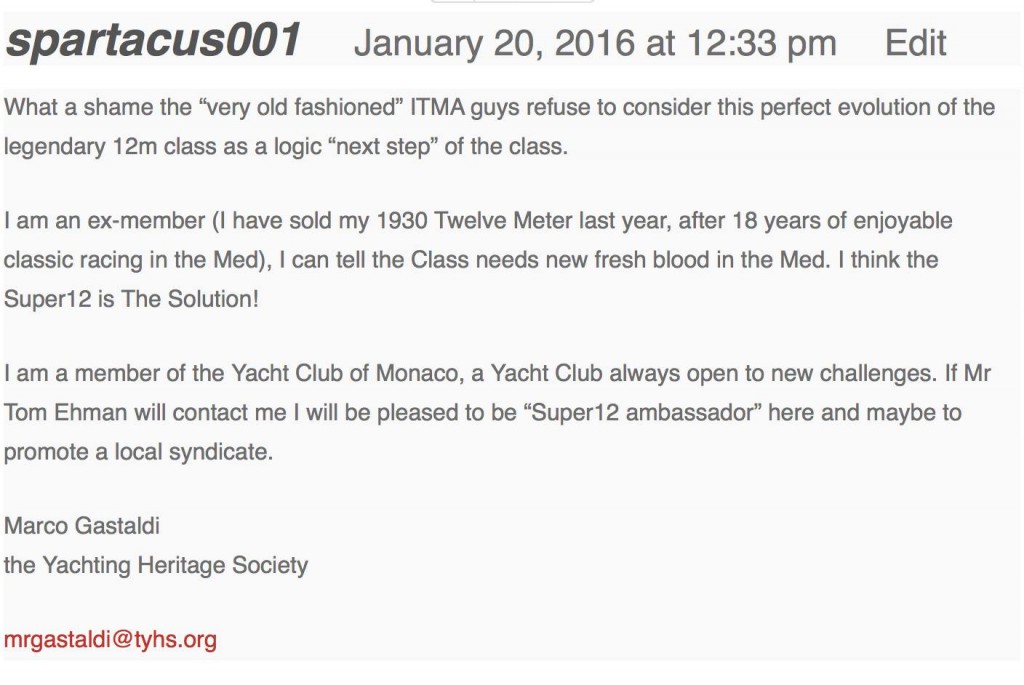 At last a statement of fact. accurately expressing things as they are.
At last a statement of fact. accurately expressing things as they are.
The proposed boats would never measure as a twelve meter. They are being proposed as the next evolution of the twelve meter however.
click here for the link to the super twelve site.
you will see that the photos are of past 12 meters and IACC yachts which were successors to the 12’s in the America’s Cup.
I2
INTERNATIONAL TWELVE METRE ASSOCIATION 7 Warner St.
Newport RI 02840
20 January 2016 By Email
Mr. Thomas F. Ehman
San Francisco Yacht Racing Cup
Dear Tom,
We have followed with interest your efforts to establish a new racing class in San Francisco conceptually modelled on the International Twelve Metre.
While we have no issue with the formation of such a class, the International Twelve Metre Class does object to your continued use of the heritage and history of our class in the promotion of your new one.
As I have mentioned to you before, our Class is active and healthy, especially in the North American Fleet based in Newport, and the in the Northern European Fleet based in the Baltic where the newest Twelve was launched in 2015. This is in addition to the recent refurbishment or restoration of several Twelves such as VICTORY ’83, DEFENDER, BLUE MARLIN, ITALIA II, and VIM.
Further, we have registered with authorities our objection to your use of the International Twelve Metre Class Insignia. Such use is completely at odds with the mutual respect for each other that has existed between sailboat classes since the adoption of such insignia at national and international levels.
Page | 1
As you are well aware, the current 12 Metre Class Insignia has been in continuous use since the adoption of the Second International Rule. Further, the addition of an “S” was used by the Scandinavian 12’s built to the Second Rule but prior to the effective date of universal implementation of the Second Rule. Subsequently, as you also are aware, the “S” has been used by yachts built to the Universal Rule at 17’ rating, specifically the Herreshoff “S” Boat one-design first launched in 1919, and still an active racing class.
Since you have decided not to affiliate your new concept with the Twelve Metre Class, we demand that you and your agents immediately cease using the Twelve Metre in promoting your effort, and cease using the International Twelve Metre Class Insignia.
As I have written to you before, ITMA, our owners, and our sponsors do not wish to see our class, legacy, or brand diluted by your efforts. If your effort is worthwhile it should be able to stand on its own, not on the Twelve Metre Class.
Yours sincerely,
W.H. Dyer Jones, President.
Cc: ITMA Officers and Members
Tom Ehman’s San Francisco Yacht Racing Challenge is a great idea. The proposed boats are NOT 12 meters. The International rule is like a sonnet; it sets particular parameters that allow latitude. These boats as I see them and as described do not fit the rule.
These boats will be more lively and quicker on their feet, but they are not 12 meters.
There is no reason the 2 meter class could not do a regatta on the same format using 12 meters, not, not 12 meters.
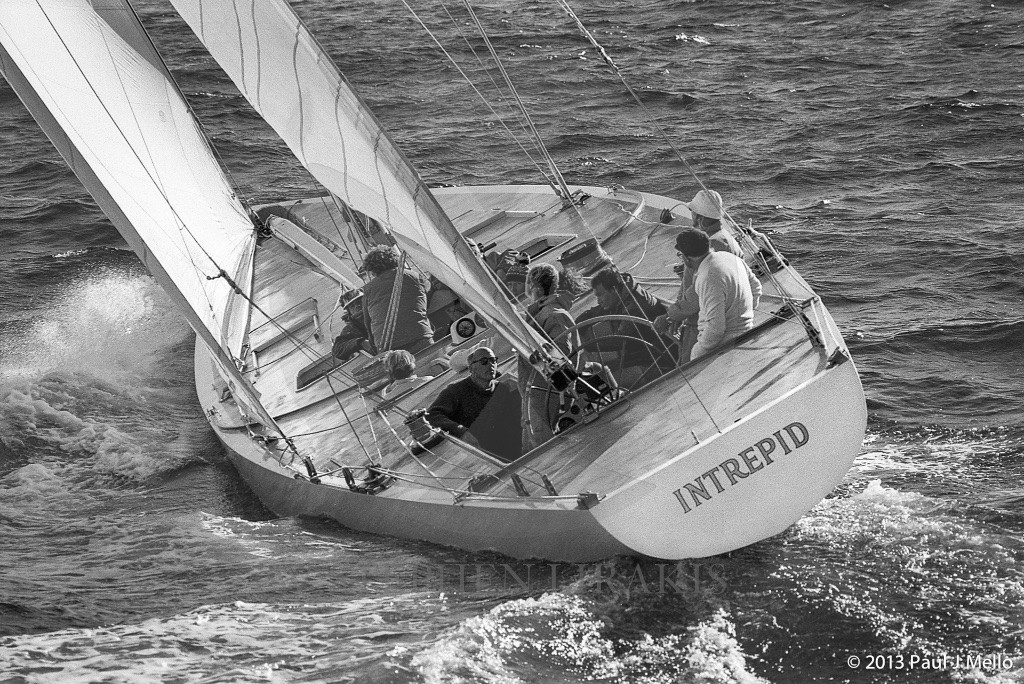
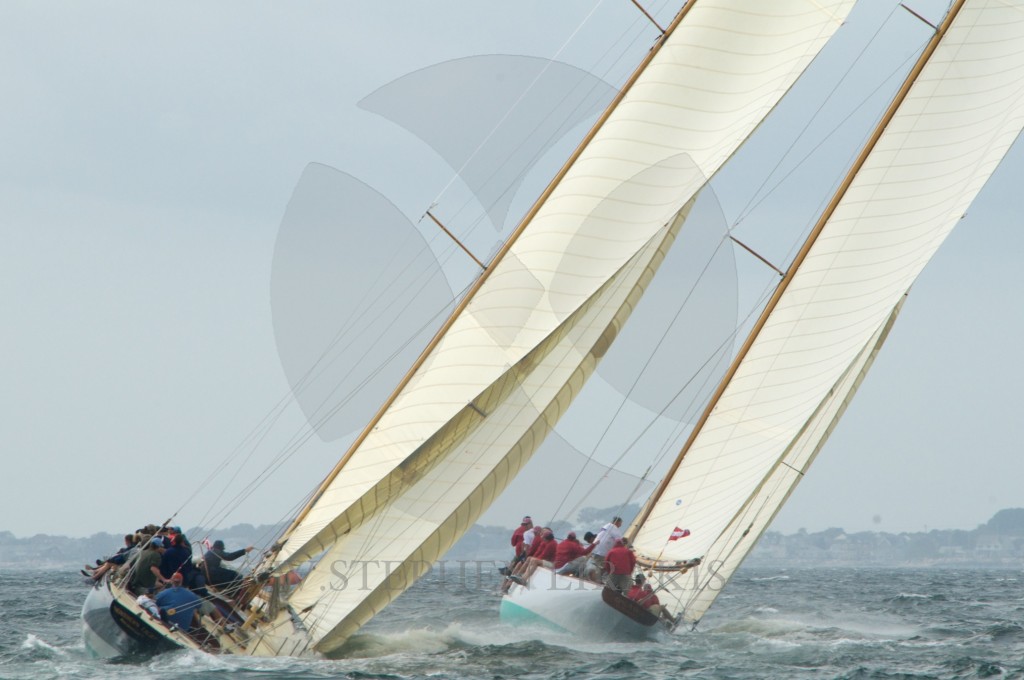
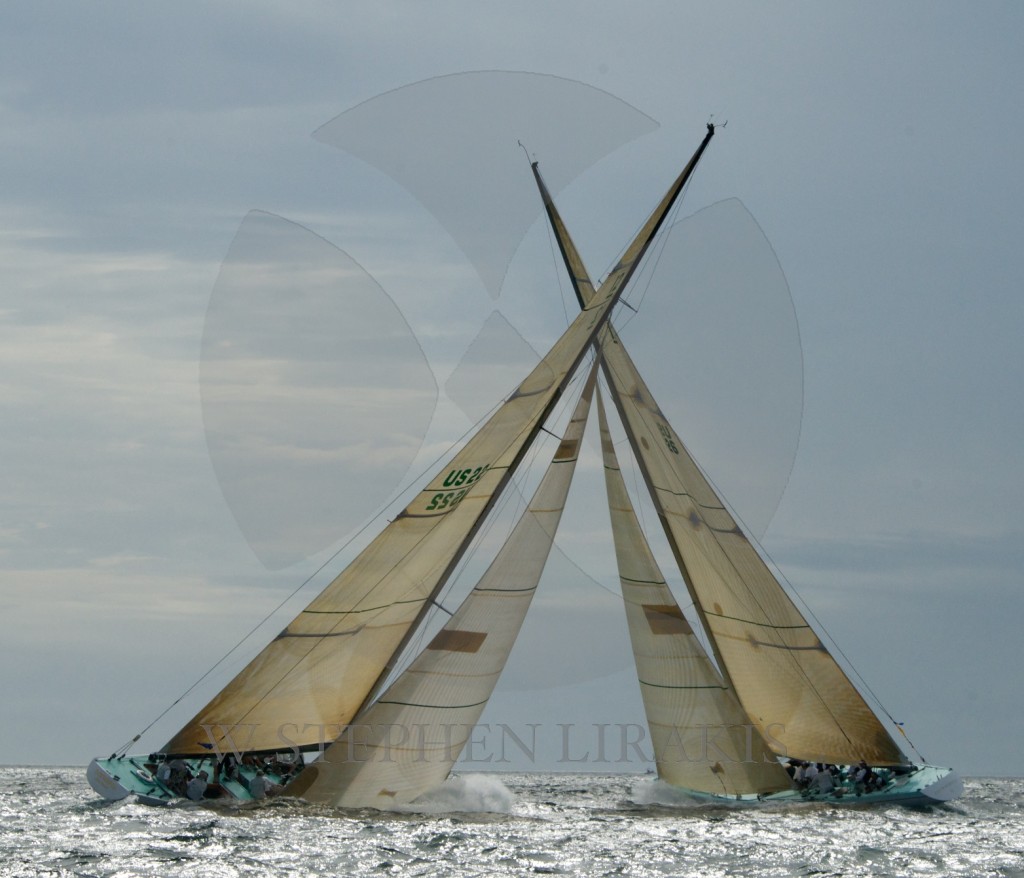
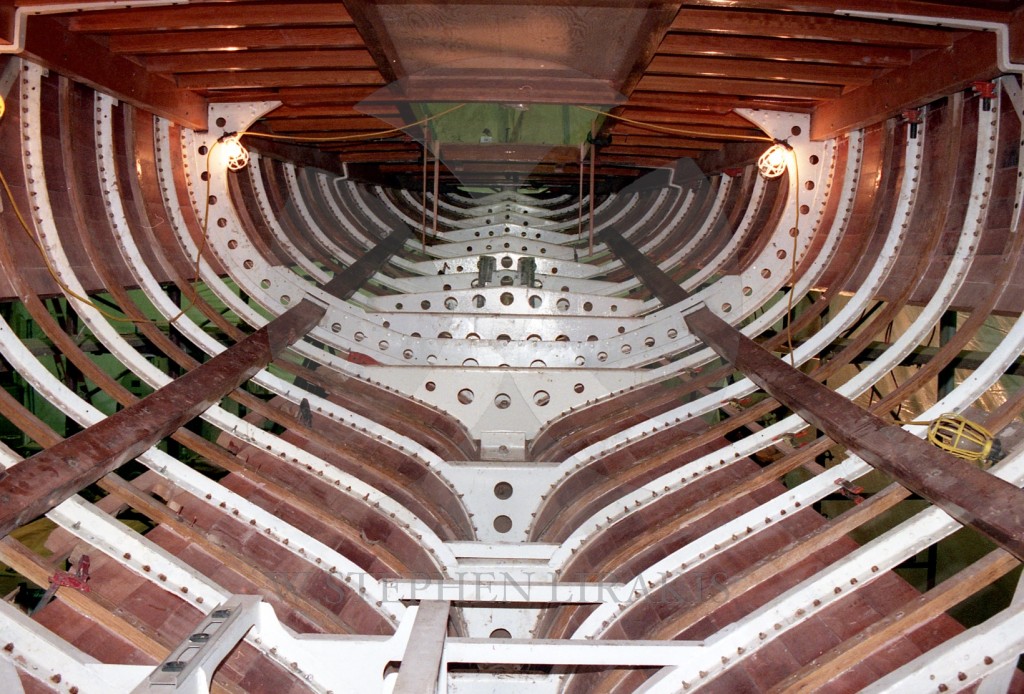
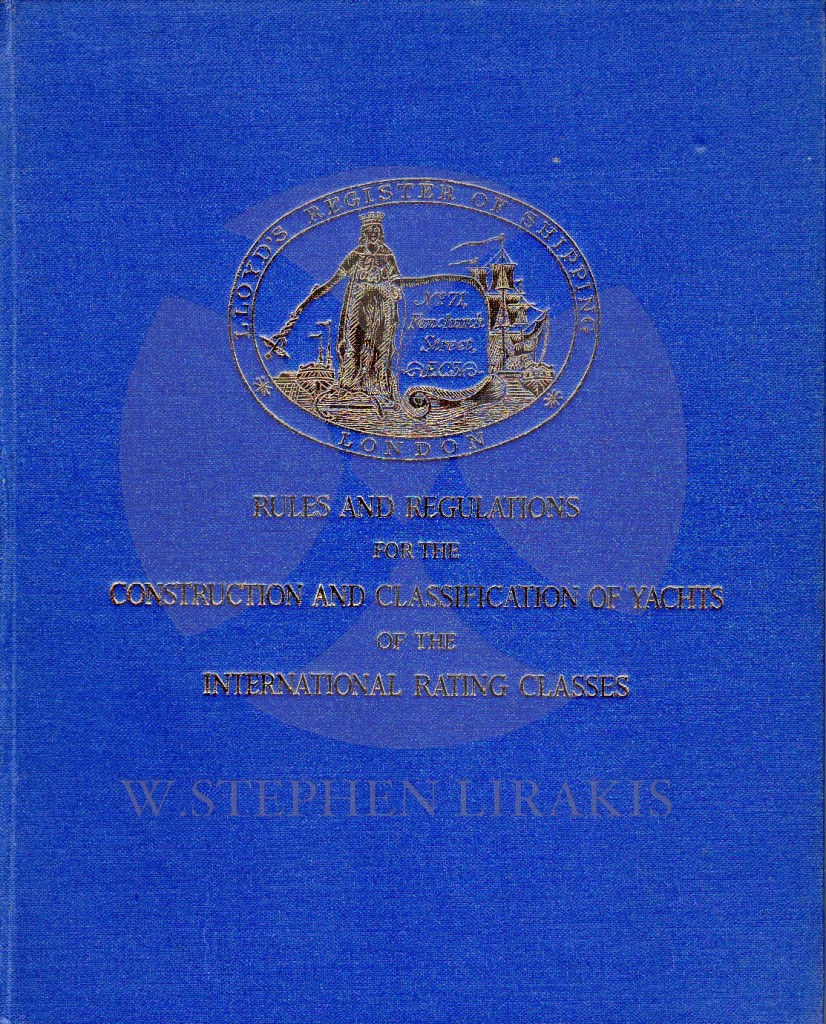
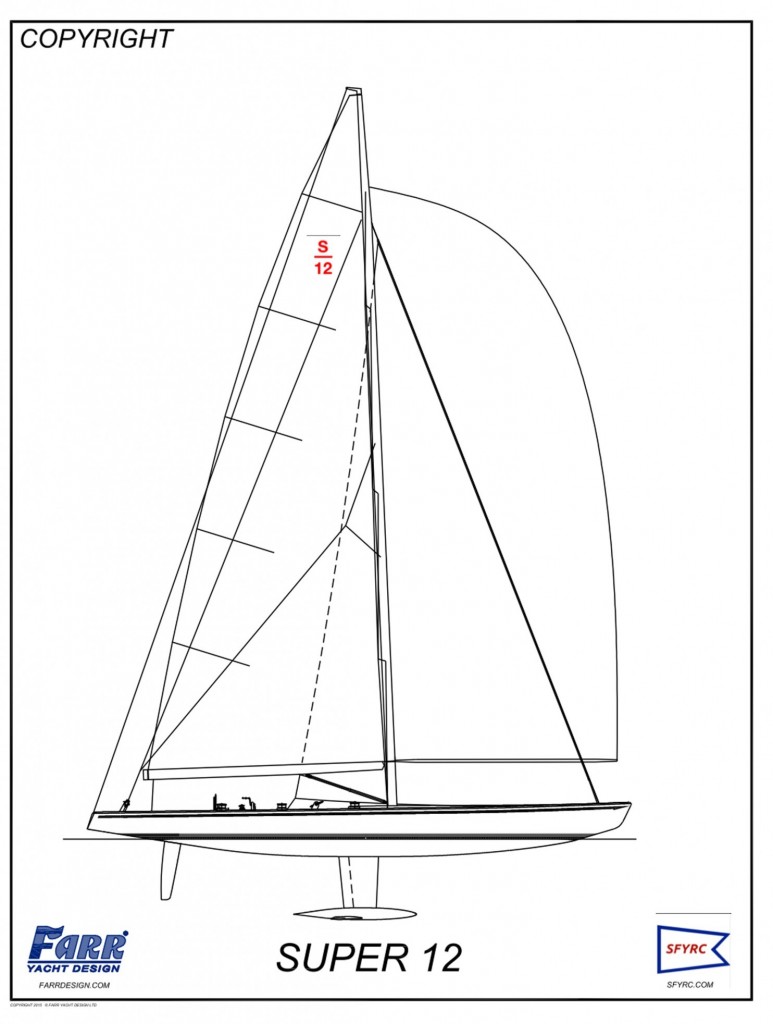
Counterpoint
Time and distance tend to impart a rosy glow, so before you guys turn the recently departed Alan Bond into some kind of sailing saint, please pause to learn some of the more pertinent realities of the man who headed Australia’s successful challenge for the America’s Cup in 1983. Here goes:
Bond was not Australian born. He emigrated here from the UK aged 11. He had a criminal record as a 14-year-old in Perth for petty theft, and fell foul of the law again at 18 for attempted burglary. Throughout his life he lied about his school record and achievements. From his early 20s he had set a pattern of not paying his business debts and borrowing beyond his capacity to pay.
Bond is still the biggest corporate criminal in Australian history. When his empire collapsed in 1991 he left the banks, financiers and shareholders around $6 billion out of pocket. He ruined thousands of lives through deliberate bankruptcies that left his mum & dad shareholders with nothing.
Bond was convicted three times for different frauds. In 1997 he was sentenced to seven years in prison for siphoning off $1.2 billion in shareholder funds for his own use. In an attempt to avoid a jail term Bond feigned mental illness. His daughter died of a suspected drug overdose and his second wife committed suicide.
As for his contribution to sailing, his America’s Cup campaigns were principally exercises in self promotion and largely financed by borrowed money. Bond was a notoriously hopeless yachtsman himself, and did little to encourage or support sailing in Australia beyond the very narrow and exclusive circle of the 12 metre scene.
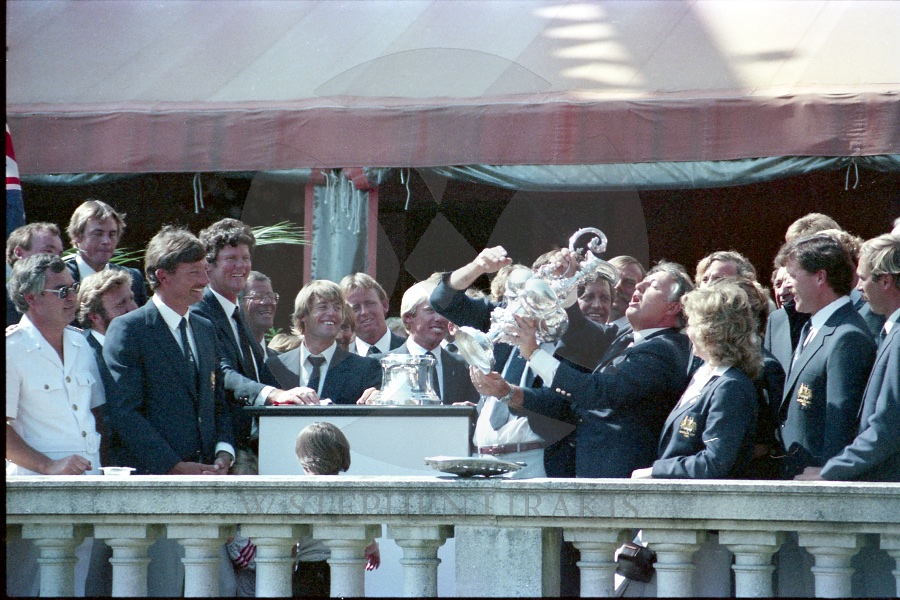
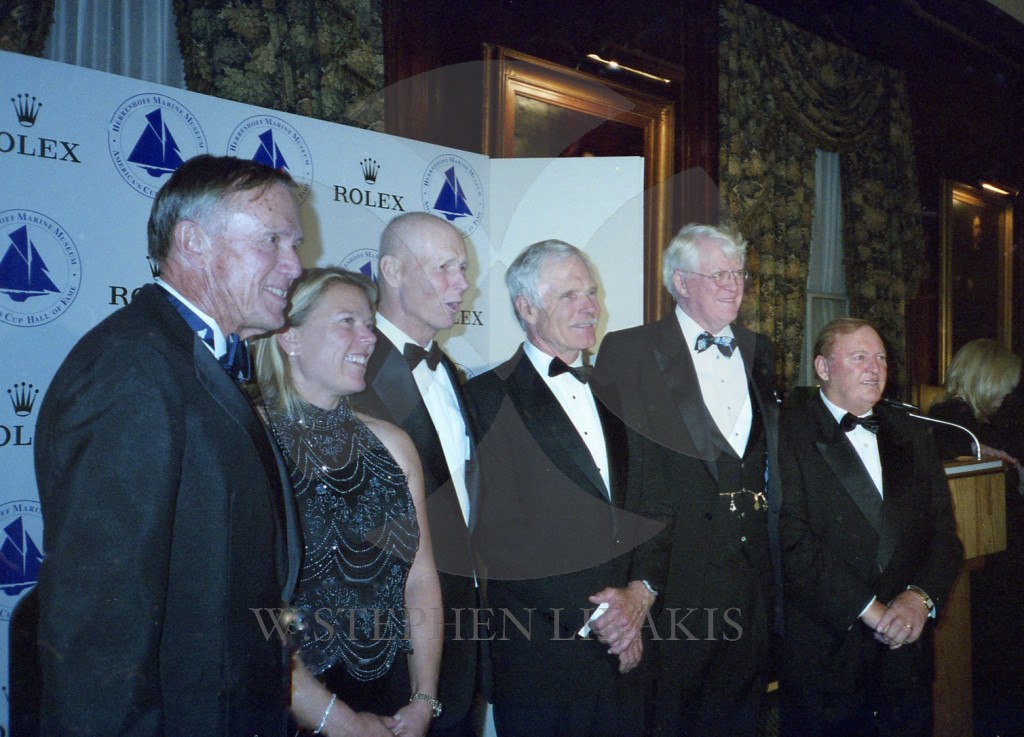
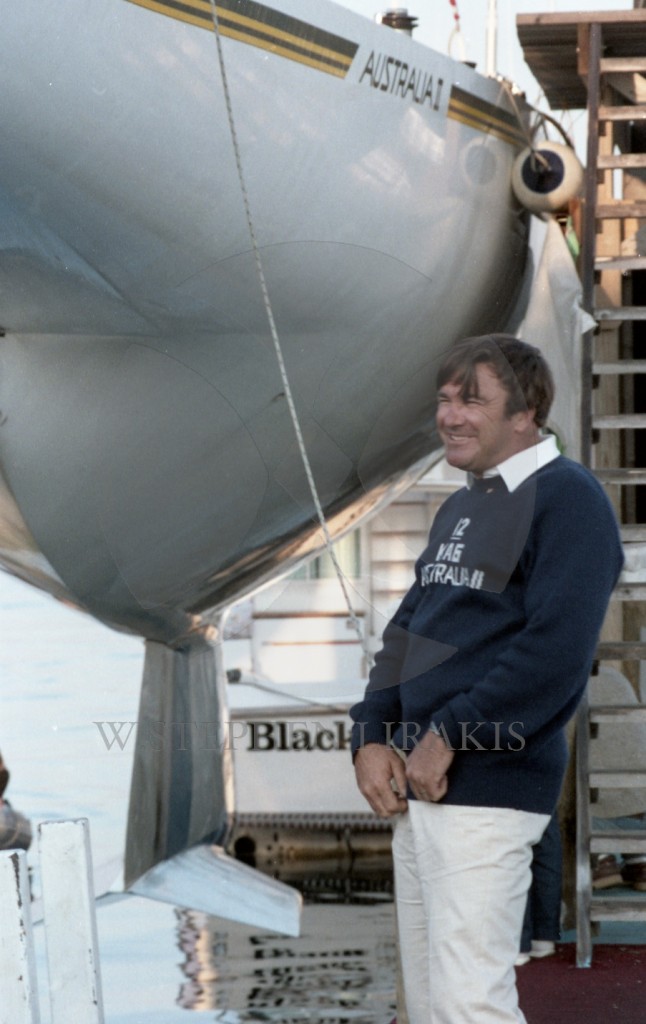
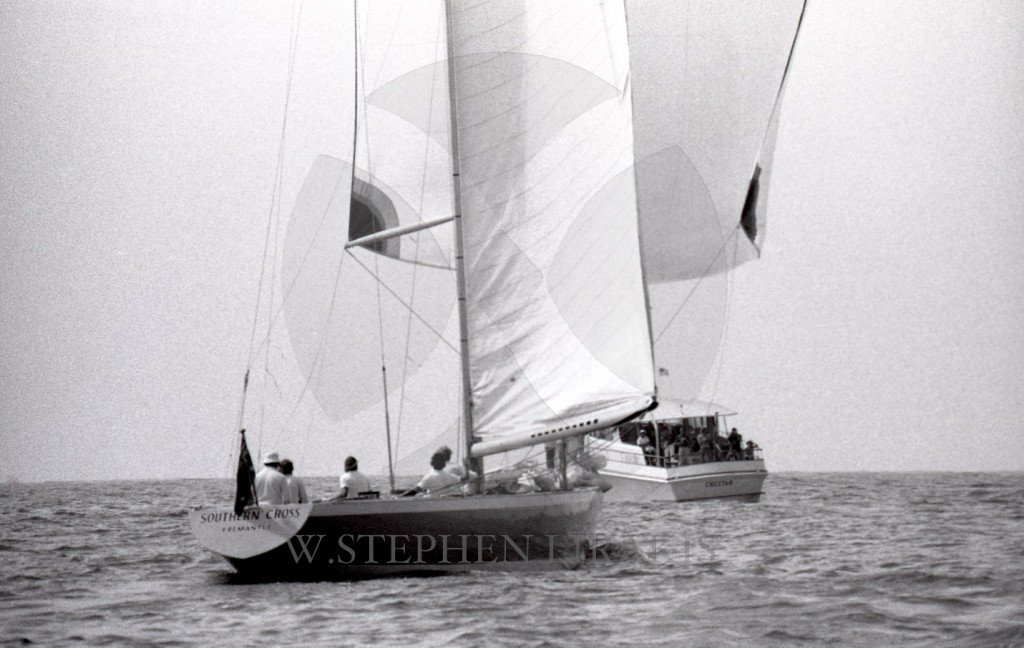
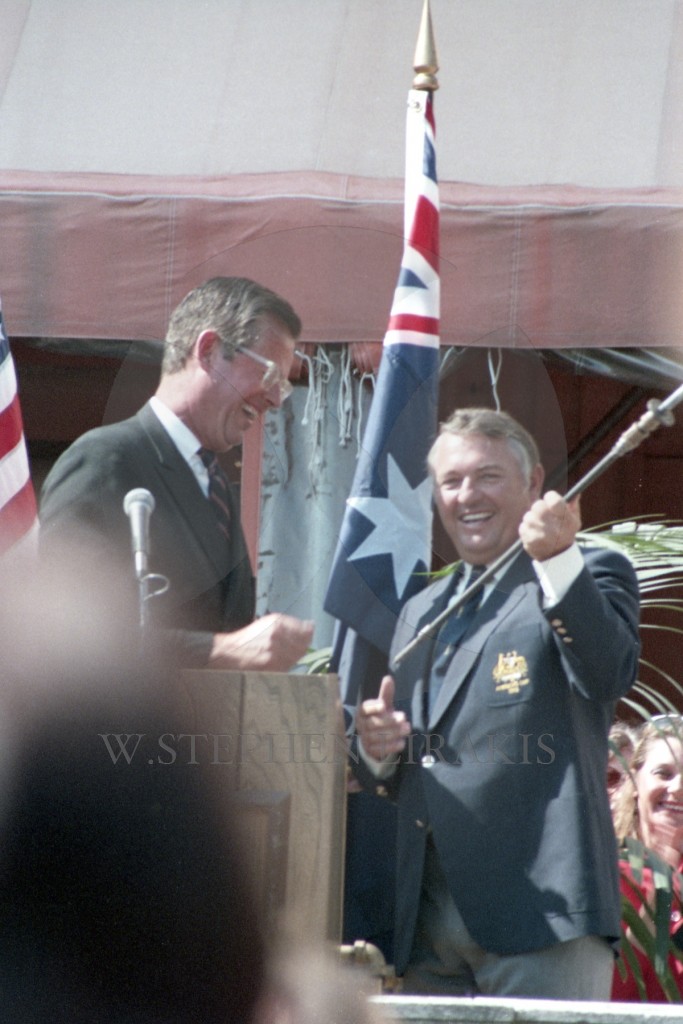
Alan Bond, the controversial business tycoon who backed Australia’s ultimately successful bid for the America’s Cup yacht race, has died aged 77. He was just 12 years old when he stepped ashore in Australia for the first time. His parents, Frank and Kathleen, like many thousands of Britons in the aftermath of the second world war, had taken the momentous decision to emigrate from the grey austerity of northern Europe to the sun-kissed southern hemisphere.
Young Alan, born in Hammersmith, west London, was plucked from Perivale school in Ealing and on arrival in Australia attended Fremantle boys’ school near Perth. He took a job as a signwriter on leaving school, but quickly realised that his future lay in business. Such was his talent and determination that before he reached his 40s, his name was known throughout Australia and beyond. In 1978 he was named Australian of the year.
His fortune was derived initially from property development, an activity which he started soon after leaving school. In 1959 he set up Bond Corporation, one of the first true “conglomerates” (corporate entities which own other, quite disparate, businesses), a form of entrepreneurship that came to dominate the stock markets internationally during the 1970s and continues to this day.
Outside the business world, however, Bond achieved fame and honour for his dedicated pursuit of the America’s Cup, the world’s most prestigious yacht racing trophy. He financed the first America’s Cup challenge in 1974, but it took a further three attempts before, in 1983, the 12-metre yacht Australia II brought the Auld Mug to the Royal Perth Yacht Club. It was the first time the trophy had been wrested from the New York Yacht Club since the competition was set up in 1851. Bond had bankrolled all four attempts, and his status as a national hero was confirmed.
Bond was big of build and charismatic of nature, and his status and personality undoubtedly contributed to an extraordinary run of successes in business. His Bond Corporation expanded from property into brewing, oil and gas, television, mineral exploitation and even airships. His personal fortune mounted up until he could be counted as one of the richest men in Australia, worth billions of dollars.
“Bondy”, as he was universally known, and his first wife, Eileen (nee Hughes), were seldom out of the society columns. He moved between Australia and London, where his business interests were also developing. Four years after the America’s Cup triumph, Bond paid US$53.9m for Van Gogh’s Irises, at the time the largest sum ever paid for a single painting.
Earlier in 1987, Bond purchased the Australian television network Channel Nine from Kerry Packer, a fellow Australian tycoon, for A$1.2bn, a deal that was to be the high-water mark of Bond’s success. In October that year, stock markets around the world crashed, an event that proved catastrophic for Bond and many other entrepreneurs.
As he struggled to keep his empire afloat, his personal life also suffered. In 1990, his marriage of 35 years was dissolved. Under pressure from the banks, that year he stepped down as chairman of Bond Corporation, which was collapsing under a mountain of debt. He began to believe that those who once feted him had been working to bring him down.
A year later, Bond Corporation finally went under, with Bond’s personal and corporate businesses inextricably entwined. He always insisted, however, that there was “no dishonesty” in the group or in the interlocking finances.
In 1992, he was declared personally bankrupt over a loan guarantee. He was accused of secreting away money and real assets such as diamonds and art treasures in overseas locations, places where neither the authorities nor his creditors could touch them. He claimed to have personally lost A$900m.
Nevertheless, he was jailed for dishonesty in relation to an Australian merchant bank, Rothwells, that had collapsed. He spent three months in prison but was later released and acquitted. Meanwhile, despite having other charges hanging over him, which led to two more convictions and prison sentences in 1995 and 1997, Bond was already beginning to lay down the foundations of a second life and a second career. He spent a total of four years in jail.
In 1995, he was released from bankruptcy. He married for the second time, and once again Bond and his new wife, Diana Bliss, began to appear in society. She was a former Qantas flight attendant whom Bond had met when she was working in public relations. Banned from holding directorships in Australia, Bond moved his centre of business overseas. He acquired interests in diamonds and oil, mostly in Africa. He lived in London but based his business interests elsewhere.
While his wealth steadily accumulated, much to the chagrin of investors who had lost money in the earlier Bond ventures, his personal life was more difficult. One of his daughters, Susanne, an equestrian show jumper, died in 2000 from a suspected accidental overdose of prescription medicine. Diana, who had carved a successful career as a theatre director, took her own life in 2012.
Bond was knocked back by these tragedies but found solace in Farm Street, the Jesuit church in Mayfair, London. His own health, however, was deteriorating. He had undergone open heart surgery in the 1990s, and in the week of his death returned to Perth for further surgery. His first wife, Eileen, travelled to Australia to be by his side.
He is survived by her, and by his sons, John and Craig, and daughter Jody.
• Alan Bond, businessman, born 22 April 1938; died 5 June 2015
• This article was amended on 5 June. A reference to Alan Bond’s second wife, Diana, being given the nickname “Big Red” by gossip columnists was deleted: it was his first wife, Eileen, whom they had given the nickname to.
THESE BOATS ARE NOT REALLY ANYTHING TO DO WITH 12 METERS.
 Tom Ehman’s Golden Gate Yacht Club Challenge already made its first political change – it’s now known as the SF Yacht Racing Challenge to keep from pissing off the rest of the Bay Area clubs. One sneaky anarchist attended an Ehman presentation about this ‘outside the box’ event for the age-advanced, and here are the details we’ve scooped up:
Tom Ehman’s Golden Gate Yacht Club Challenge already made its first political change – it’s now known as the SF Yacht Racing Challenge to keep from pissing off the rest of the Bay Area clubs. One sneaky anarchist attended an Ehman presentation about this ‘outside the box’ event for the age-advanced, and here are the details we’ve scooped up:
+ The new class will be known as Super 12s, and will be more of a ‘Spirit of Tradition’ version of a 12 rather than a real one. A Grand Prix (post-1983) 12 above the waterline, a modern fin-keel yacht below. Carbon-composite hull, deck and rig.
+ Strict OD including deck hardware and sails (lesson learned from Volvo) for the obvious cost savings, as well as to make it a crew contest, not a design/budget battle. Draft will be under 10? – they’re shooting for 9’5? – both for access to area clubs and to commercial yards.
+ Boats are expected to be convertible to a charter life after their competitive lifespan ends.
+ Crews will have a strict nationality requirement (passports?) as well as an interesting diversity requirement: each crew will need to include a minimum of two women and two men as well as two aged 22 or younger, and one aged 62 or older. College sailors should be eligible through their senior year, and the total crew size will be 12.
+Teams will have to work with local YCs/marinas/yards to create a base in an existing facility – no building out of own piers for a team base that is separate from existing local sailing community
+ Fleet racing and match racing finals will take place on the San Francisco city front for 2 weeks in July, when average afternoon (1300-1800) wind speed on the Bay is 13kts or more virtually 100% of the time (13-30kts). There will be no upper wind limit; lower wind limit of 5 knots or so, though stats say it ain’t gonna happen much, if at all. “Hell or high water” is what we were told.
+An East Coast venue will likely come into play within the first couple of years, and our guess is an obvious one: Newport. We can see Annapolis trying to regain some of the luster they’ve lost as one of America’s real sailing cities…other than that pesky problem with having breeze.
+The boats should cost somewhere between 2 and 3 million, and the campaign another 500k to 1M.
Several Italians are apparently quite keen; we’d hope to see Vincenzo and Patrizio back in the kind of racing they both enjoy. Here’s an Italian take on it.

There will be smiles around San Francisco Bay with the announcement that America’s Cup style racing is set to return to the venue of the 34th America’s Cup.
A bold plan by Tom Ehman, whose experience with the Cup dates back to 1977, will see racing resume on an annual basis in updated 12 Metre yachts – which were the preferred Cup class from 1956 to 1987.
The new event will reflect the true spirity of the America’s Cup Deed of Gift, with competition being between yacht club teams comprised only of nationals from that club’s country.
The new event is being masterminded by Tom Ehman who is currently the Vice Commodore of the Golden Gate Yacht Club, the body charged under the 19th century Deed of Gift, which governs the conduct of the America’s Cup, with the organisation of the 35th America’s Cup.
The America’s Cup Events Authority is the body responsible under the Protocol for the organisation of the next Match, but it created a great deal of angst amongst the San Francisco sailing fraternity when it decided not to Defend in its home waters, and took the Cup Defence to Bermuda.
That frustration has spawned the new event, coupled with the desire of San Francisco sailors to maintain their place on the international sailing vista.
Unlike the America’s Cup the new San Francisco event will carry half a million dollars in prizemoney, and will be a lot lower costs of entry, with a figure of $1million being touted as the annual cost to run a team.
The benefit for sponsors is that they will get annual exposure for their outlay, as opposed to the once every three/four years with the current Cup plus what can be obtained from the America’s Cup World Series – a three day event which will be sailed three times this year, and with only three venues announced for 2016
Speaking with Associated Press, Ehman said he envisions the Golden Gate Challenge as the Wimbledon of yacht racing in that it will be held every year at the same venue. Unlike the America’s Cup, all teams will be challengers, meaning they’ll start on equal footing each year.
To be named the Golden Gate Yacht Racing Challenge, the new event is being launched at a time when many in the sailing world have questioned the vision for the 35th America’s Cup of Larry Ellison and Russell Coutts, which has so far lost two of its Challengers of Record in the first 18 months of the 35th America’s Cup cycle.
Ehman said he hopes to attract team owners who have been priced out of the America’s Cup or turned off by recent turmoil.
‘This is an opportunity to do something for the sport and the former cup community,’ Ehman said from San Francisco.
Ehman told Bernie Wilson of the Associated Press that he’s working to secure event sponsors and teams.
‘I think this is the best venue in the world for showcasing yacht racing and that was shown in the last cup,’ he said. ‘There’s a crying need in the world of yacht racing for such an event, especially in monohulls and especially in a lot of breeze. We’re seeing that because of what’s happening or not happening in other parts of the sport and in other parts of the world.’
The move is sure to raise the hackles of the America’s Cup Events Authority, a privately owned company charged by the Golden Gate Yacht Club with the commercial and event management activities surrounding the 35th America’s Cup, now removed to Bermuda.
Technically Ehman is part of a management structure to which ACEA reports, however his position is also understood to be voluntary, and ACEA would have few options open to shut down this new initiative or Ehman’s involvement in promoting a new sailing event in a venue deserted by ACEA.
Ehman remains vice commodore of the Golden Gate Yacht Club, which is the America’s Cup trustee. He said his regatta is not affiliated with the GGYC and won’t compete with the America’s Cup. It is believed the new event will be hosted by all Bay area yacht clubs, and existing facilities will be used for team bases
‘I think the America’s Cup is off on its own and always has been,’ Ehman said. ‘The America’s Cup will survive the current situation. There is obviously strong interest in monohull racing with strong teams, in boats everyone has heard of and loves. There is a nostalgia and romance with the 12-meters, and to have those boats racing in a lot of breeze on San Francisco Bay where people can watch it, it will remind people of how great the America’s Cup was in Fremantle in 1987 in windy conditions in 12s.’
Ehman told AP that he’s having designers look at modernizing the 12s and hopes to keep the cost below $3 million per boat. All boats would have the same hull shape, which would make the regatta a test of sailing skill rather than a design competition, helping to hold down costs.
Thanks to Henrik Andersin for the marvelous historical footage
John Hartridge's Reunion with Blue Marlin from Henrik Andersin on Vimeo.